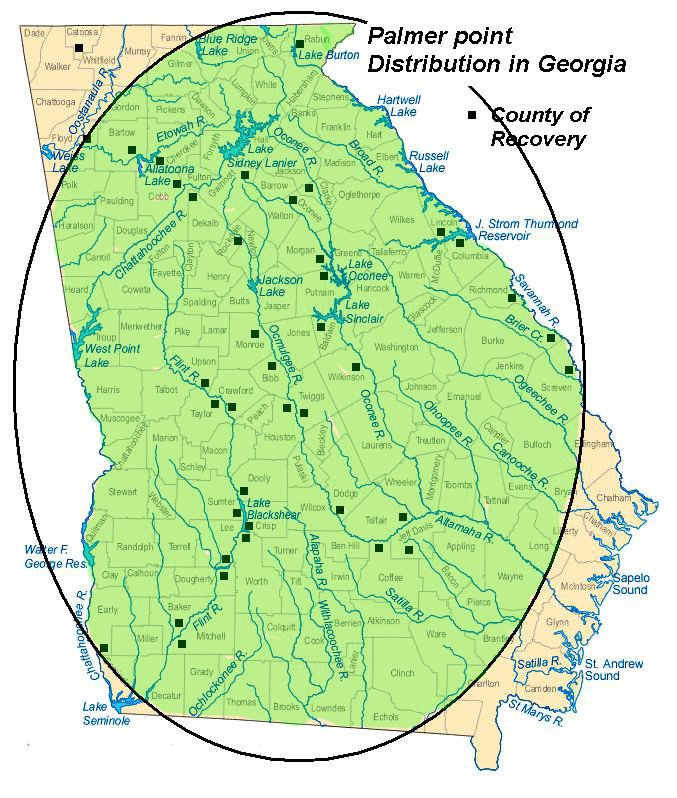Name: Joffre Coe named the Palmer point for examples from the Archaic levels of the Hardaway site in North Carolina.
Age: Coe stated that the Palmer points followed the Hardaway occupation in the Early Archaic levels of the site. The Palmer is believed to be the forerunner of the Kirk Corner Notched point that also followed the Palmer at the Hardaway site. The Palmer point is believed to date between 9,500 and 8,000 years BP.
Description: The Palmer is a small corner-notched point, usually measuring less than 2 inches in length. There is no clear definition of size between the Palmer point and the Kirk Corner Notched point, though small, basally smoothed corner notched points are regarded as Palmers. The blade edges of Palmer points are usually beveled on the left side or serrated. The basal edge is flat to incurvate and is always smoothed. John Whatley notes that these points are usually made of local chert or quartz, yet maintain the same diagnostic characteristics. Palmers also share many diagnostic similarities to the Decatur point of Alabama, which is also an Early Archaic type.
Distribution: Palmer points are widely distributed across Georgia. John Whatley correctly suggested that small corner notched points, labeled as Bolen corner notched points would be better labeled as Palmers. Larger “Bolen Corner Notched points (Bullen’s type 4) would be better labeled as Kirk Corner notched points in Georgia.
